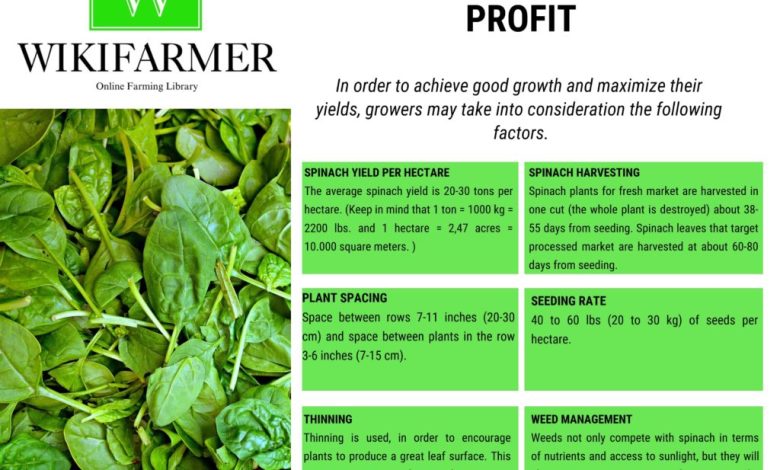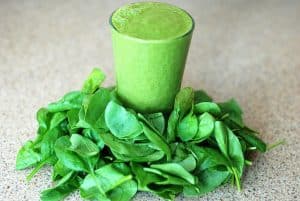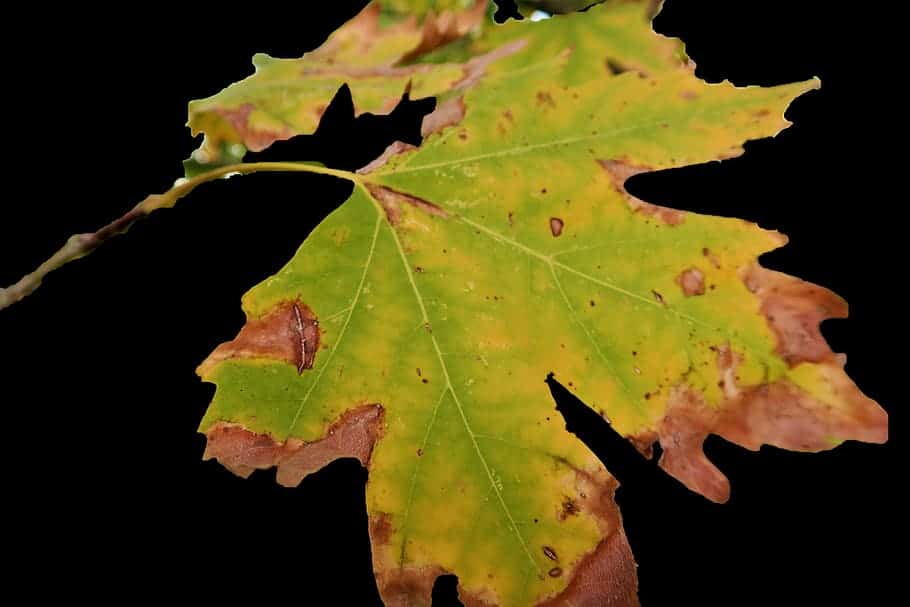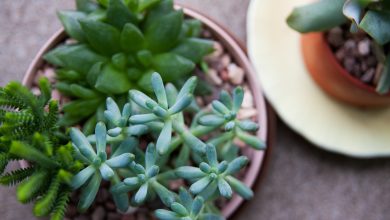How to Plant Spinach: Basic Guide [Step by Step + Images]

Three reasonswhy you should plant spinach in your garden:
- They are easy to grow.
- They are harvested quickly.
- They are TREMENDOUSLY nutritious and tasty.
And besides, they are Popeye’s favorite food. Do you still doubt?
I ask you to spend 6 minutes of your time reading this little guide. you will learn howplant spinachin your garden with success.
Plant Spinach Step by Step:
- When? Autumn varieties in late August, spring varieties in February.

- Where? Areas that receive sunlight. In summer shaded areas are preferable.
- Harvest time? Between 2-3 weeks.
- How do we prepare the land? Rich in humus, clay, which withstands moisture well.
- How do we pay? With the organic matter of a previous sowing. In case of using compost or manure that is very decomposed.
- How do we plant them? Prepare two lines, bury two or three seeds 2cm apart and leave a distance of 30cm between each one.
- How do we water? Ideal drip irrigation. Very constant, but little time. The ideal is little, but every day.
- When do we collect? When the leaves reach a good size, we cut them and leave the ones in the center to grow back.
- What do we sow with them? Broad beans, peas, strawberries, celery, beans, cabbage, chard, escarole, lettuce.
- What enemies does he have? Slugs and excess moisture.
Spinach Characteristics
Spinach, whose scientific name is Spinace oleracea, is a type of leafy vegetable known worldwide for being Popeye the Sailor’s favorite food.
They are much more flavorful and nutritious if we take them fresh from our garden. So learning to plant them can be one of the best things we do for our health.
Did you know…spinach is a vegetable from Iran, and has been cultivated for centuries in Europe due to its great nutritional attributes and its easy adaptation to any climate and soil?
 Spinach is great to accompany any dish.
Spinach is great to accompany any dish.
It can be used to make salads, but also to make mashed potatoes or soups. Together with garlic, they can be tremendously tasty.
Also, who hasn’t tried a spinach omelette?
Spinach is loaded with nutrients. Among which we can highlight:
- Laxative, refreshing and antianemic properties.
- Vitamins A, C, B1, B2, PP and K.
- Calcium, copper, iron, iodine, manganese, magnesium, phosphorus, zinc, and sulfur.
Did you know…Due to an error in a laboratory, for many years advertising agencies believed and reported that spinach had much more iron than it actually did. This is because some chemists were wrong when writing down the amount of iron per gram of spinach.
When can I start growing spinach?
It depends on the variety.
In the case of being autumn varieties, we can start sowing them at the end of summer. Depending on the weather, that is, in the event that the summer extends until the beginning of autumn, we can also sow during this month.
If we sow early in the fall we will be able to harvest spinach until next spring.
For the spring varieties, we will start the sowing between February and March (depending on the hemisphere where you are), and if we provide the plants with a good irrigation we will be able to harvest until after the summer.
Where do we start growing spinach?
 We are lucky that we don’t need much to grow spinach. They adapt to many climates, although they prefer humid areas and like the freshness of the environment.
We are lucky that we don’t need much to grow spinach. They adapt to many climates, although they prefer humid areas and like the freshness of the environment.
They do not freeze easily and adapt well to the cold. Most varieties of spinach (of which there are many) can withstand frost well.
On the other hand, lack of moisture and droughts cause spinach to turn bitter easily.
On the other hand, we need the spinach to be very exposed to sunlight throughout the year, except in summer for very hot climates, such as the Mediterranean. The reason is that spinach requires a lot of moisture and in summer it is easy for them to dry out.
That is why we prefer shaded areas, like the lamb’s lettuce (although they prefer it all year round).
How do we want the earth?
We need soils that:
- Rich in humus.
- Holds moisture well.
- Clayey.
How do we fertilize the land?
Like other plants such as chard and saffron, they require manure and compost, but it is very decomposed. It does not tolerate organic matter well, such as poorly decomposed manure.
Therefore, it is ideal to take advantage of areas where we have planted other more demanding vegetables, such as tomatoes, cabbages or aubergines.
In case of fertilizing the land because it is very low in nutrients, we will do it almost a month before planting the spinach.
Trick:Foliar fertilizers with comfrey or nettle slurry, in addition to compost tea, usually give very good results with spinach.
How do we water spinach?
 Spinach, as we have mentioned before, requires a soil that is constantly moist. Therefore, we will try to keep the soil watered daily, and in small doses.
Spinach, as we have mentioned before, requires a soil that is constantly moist. Therefore, we will try to keep the soil watered daily, and in small doses.
For this and like most times, the drip option is ideal. In the case of spinach, it is interesting to do it daily, for about 30 minutes. Depending on the climatic zone in which we are, the drought and the heat that it is doing.
To more heat and greater drought, we will increase the minutes of irrigation.
grow spinach step by step
- We can sow spinach from the seeds. Its cultivation is simple.
- First we must prepare the land as we have mentioned before.
- The more removed and richer it is, the easier it will be to plant spinach.
- We make two lines and deposit two or three seeds on the ground.
- Buried about 2cm and squeezing the earth.
- Between each of the buried seeds we will leave a space of about 30cm.
- Once the seeds germinate and grow strongly, we will practice thinning to help the plant grow more easily.
What do we grow next to spinach?
Spinach grows very fast and we can plant it together with many other vegetables.
In any case, they stand out:
When can we harvest them?
 Approximately when the leaves reach a good size. Timing varies, but ranges from five to seven weeks after planting the spinach seeds.
Approximately when the leaves reach a good size. Timing varies, but ranges from five to seven weeks after planting the spinach seeds.
It is advisable to always choose the largest leaves and leave the ones in the center, since from there they will continue to grow and give the possibility of obtaining new leaves.
A spinach plant allows you to cut a leaf up to five times. Then, we will cut or uproot the entire plant.
Trick:Don’t plant all the spinach seeds in one sitting, because they will give you a lot of spinach that you won’t be able to eat before it goes bad.
It is much more interesting to save the seeds and do staggered planting. This way we can have a constant supply of spinach.
To know more, read: Varieties of spinach.
Spinach pests and diseases
 One of the spinach diseases is verticillium wilt. Verticillium or Verticillium wilt is a common soil fungus that thrives in temperate climates around the world and can be present in the soil for decades.
One of the spinach diseases is verticillium wilt. Verticillium or Verticillium wilt is a common soil fungus that thrives in temperate climates around the world and can be present in the soil for decades.
Verticillium wilt overwinters in the soil as dormant mycelium or tiny dormant black structures called microsclerotia, waiting for favorable conditions to return.
They enter damaged plant tissue through the roots and multiply. Many common weeds, such as dandelions and weeds, can be Verticillium host species.
Verticillium wilt is a disease that affects more than 350 species of eudicolous plants. It is caused by six species of Verticillium fungi: Verticillium dahliae, Verticillium albo-atrum, Verticillium longisporum, Verticillium nubilum, Verticillium theobromae, and Verticillium tricorpus.
Many plants with significant economic weight are susceptible, such as cotton, tomatoes, potatoes, oilseed rape, aubergines, peppers, and ornamental plants, as well as others in natural vegetation communities.
Many species and cultivars of eudicots are resistant to the disease, and all monocots, gymnosperms, and ferns are immune. To know more: Verticillium wilt in the Orchard: What is it? How do we identify it?

![Photo of Aglaonema: [Care, Planting, Irrigation, Substrate and Characteristics]](https://www.complete-gardening.com/wp-content/uploads/2022/08/aglaonema-care-planting-irrigation-substrate-and-characteristics-390x220.jpg)

![Photo of Autumn Flowers: [Names, List, Care and Characteristics]](https://www.complete-gardening.com/wp-content/uploads/2021/06/flores_de_1589019104-390x220.jpg)
